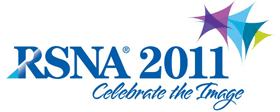
Abstract Archives of the RSNA, 2011
MSVP12-04
Comparing Segmented ASL Perfusion of Vascular Territories Using Manual vs Semi-automated Techniques in Children with Sickle Cell Anemia
Scientific Formal (Paper) Presentations
Presented on November 27, 2011
Presented as part of MSVP12: Pediatric Radiology Series: Neuroimaging II
Kathleen J. Helton MD, Presenter: Nothing to Disclose
John O Glass MS, Abstract Co-Author: Nothing to Disclose
Arash R Zandieh MD, Abstract Co-Author: Nothing to Disclose
Jane Hankins MD, Abstract Co-Author: Nothing to Disclose
Banu Aygun MD, Abstract Co-Author: Nothing to Disclose
Rachna Dave, Abstract Co-Author: Nothing to Disclose
Wilburn E. Reddick PhD, Abstract Co-Author: Nothing to Disclose
Robert J. Ogg PhD, Abstract Co-Author: Nothing to Disclose
Amir Paydar MD, Abstract Co-Author: Nothing to Disclose
Sickle cell anemia (SCA) is a potentially catastrophic chronic hematologic disease associated with brain injury, stroke and neurocognitive deficits. The hemolytic anemia of SCA is associated with inflammatory changes, endothelial injury, large and small vessel vasculopathy, and adaptive pathophysiologic changes that lead to elevated cerebral blood flow (CBF). While the elevated CBF is adaptive for the short term, there is resultant decrease in vascular reserve and increased risk for ischemia. These CBF changes can be measured non-invasively by arterial spin labeling (ASL) techniques, but no standardization to quantify CBF longitudinally exists. We compared a novel computer-aided semi-automated (SA) assessment of gray matter CBF by vascular territories against subjective manual (M) delineation of vascular territories.
Twenty one children with SCA (median age 12 years, range 5-17; M/F ratio 2.5) in this IRB approved prospective imaging research protocol underwent pulsed ASL Q2TIPS perfusion. Conventional MR images were co-registered to ASL images and segmented. Comparison of M vs. SA analysis of CBF by vascular territory was performed and correlated with hematologic variables acquired within 3 weeks of the MRI.
The kappa index (KI) shows good similarity between the pixels selected by both techniques for the six territories analyzed (Left Anterior, Middle, Posterior Cerebral Artery [KI 0.64, 0.76, 0.56] Right Anterior, Middle, Posterior Cerebral Artery [KI 0.66, 0.79, 0.53]). Correlation coefficients between the CBF from the M and SA techniques were all above 0.95 from linear regression analysis. Additionally, linear regressions between the absolute reticulocyte count, a measure of hemolysis, and CBF in the Posterior Cerebral Artery territories were substantially associated [R= 0.58, 0.54] demonstrating pathophysiologic changes that lead to elevated CBF.
The semi-automated method for measuring CBF in patients with SCA is comparable with the manual one, potentially reducing the chance for operator-induced bias. In addition this new assessment method revealed association between CBF and degree of hemolysis in the PCA territories.
This novel semi-automated method for CBF assessment can be utilized in future prospective clinical trials to reduce interoperater bias and examine therapies for stroke risk reduction.
Helton, K,
Glass, J,
Zandieh, A,
Hankins, J,
Aygun, B,
Dave, R,
Reddick, W,
Ogg, R,
Paydar, A,
Comparing Segmented ASL Perfusion of Vascular Territories Using Manual vs Semi-automated Techniques in Children with Sickle Cell Anemia. Radiological Society of North America 2011 Scientific Assembly and Annual Meeting, November 26 - December 2, 2011 ,Chicago IL.
http://archive.rsna.org/2011/11013140.html

